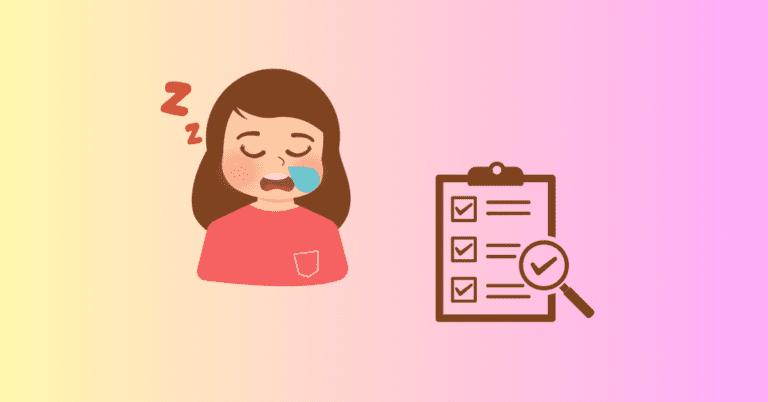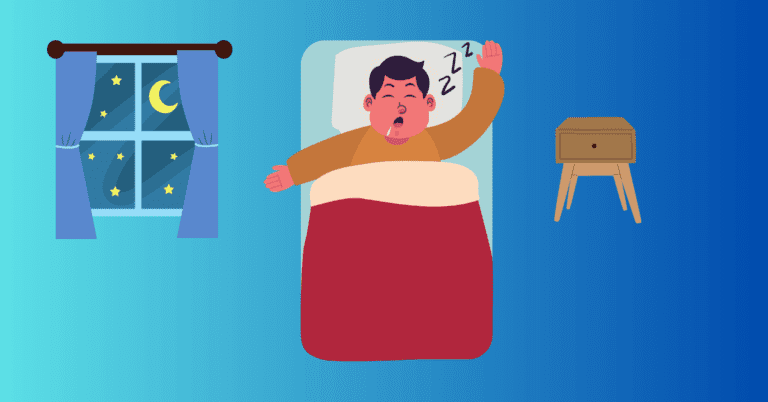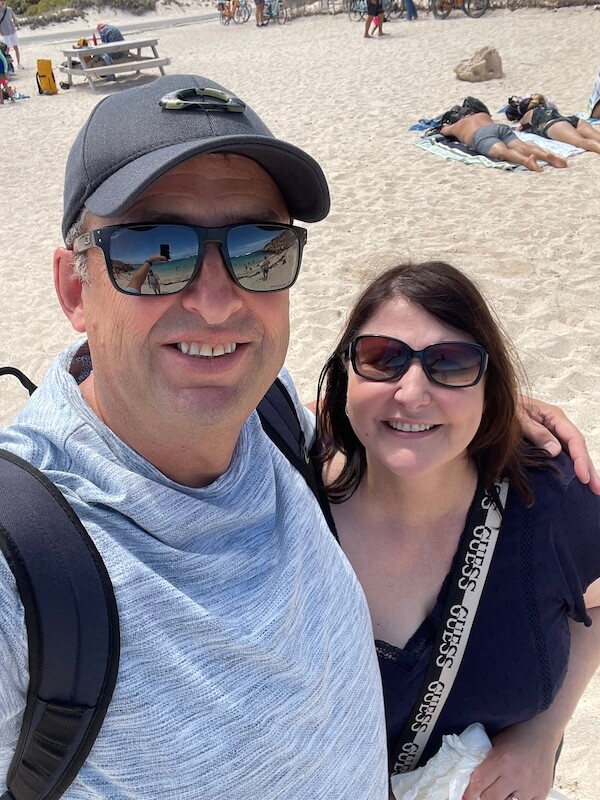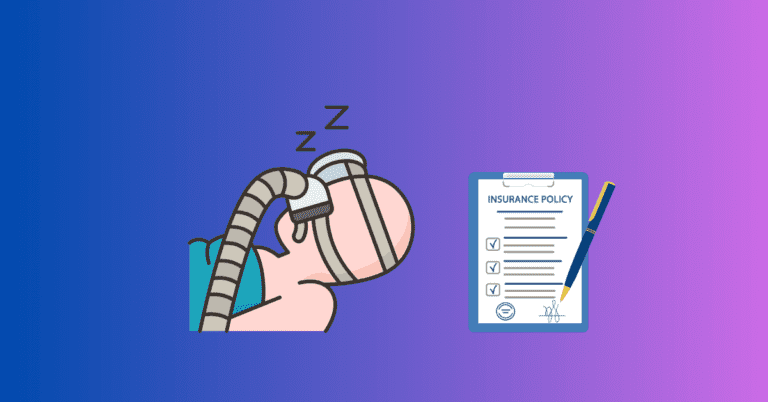What is Sleep Apnea? The Silent Intruder Disrupting Your Sleep
Jeremy Smith is a long-term CPAP user and sleep apnea advocate. After being diagnosed with severe obstructive sleep apnea, he created ByJeremySmith.com to help others navigate CPAP therapy through personal stories, gear reviews, and practical advice.
If you ask someone, “What is sleep apnea?” They will likely tell you that it is very loud and annoying snoring.
But it’s much more than that, and in this article, I will also share my personal experiences of being diagnosed with severe obstructive sleep apnea.
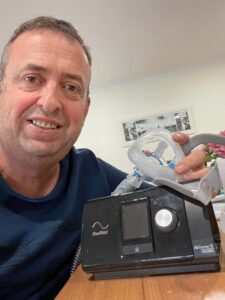
Sleep apnea is a severe sleep disorder that affects millions of people worldwide. It causes a person’s breathing to repeatedly stop and start during sleep, leading to poor sleep quality and potential long-term health issues.
In this guide, we’ll explore everything you need to know about sleep apnea—from its types and symptoms to diagnosis and treatment options- as well as my journey with severe sleep apnea.
If you read that quickly, you might be forgiven for thinking that when I say “a person’s breathing repeatedly stops and starts during sleep,” it is not a big deal. But it is enormous – especially if you suffer from severe sleep apnea like me…
When you are asleep, your body has to undergo a lot of shock to sense that you are not breathing and get you to start breathing again. It’s like jump-starting your body!
Now imagine this happening once every minute, which is the case for a severe sleep apnea diagnosis, and the toll this takes on your body every minute, every night, for the rest of your life.
Personal Insight: Living with severe sleep apnea has made me realize the profound impact it can have on one’s life. It’s not just snoring or feeling tired during the day; it can severely affect your health and well-being. Before I was diagnosed I was suffering severe migraines every few weeks and it was getting worse. I’m confident my CPAP machine has saved my life.
Types of Sleep Apnea
Understanding the different sleep apnea types is crucial for effectively diagnosing and treating this sleep disorder. Here’s a closer look at the three primary types:
- Obstructive Sleep Apnea (OSA):
Obstructive sleep apnea (OSA) is the most common form and occurs when the muscles in the throat relax excessively during sleep, causing the airway to collapse and block airflow. This type is most commonly associated with loud snoring, though not everyone who snores has OSA. Risk factors for OSA include obesity, having a naturally narrow airway, or having enlarged tonsils that can block the airway. Men are more frequently diagnosed with OSA than women. - Central Sleep Apnea (CSA):
Central sleep apnea is less common than OSA and involves the central nervous system. It occurs when the brain fails to send signals to the muscles that control breathing. This type of sleep apnea is more associated with underlying medical conditions, such as heart diseases, strokes, or brain tumors. It can also be seen in individuals at higher altitudes with lower oxygen levels. Unlike OSA, snoring is not typically as prevalent in CSA. - Complex Sleep Apnea Syndrome:
Also known as treatment-emergent central sleep apnea, complex sleep apnea syndrome occurs when someone has both obstructive sleep apnea and central sleep apnea. This condition can be particularly challenging to treat because it involves both mechanical obstruction of the airway and a failure of the brain’s control over breathing. Patients with this type of sleep apnea may start off with OSA and develop CSA during treatment with CPAP (Continuous Positive Airway Pressure).
Each type of sleep apnea has unique characteristics and implications for treatment. In severe cases, OSA is primarily treated with methods that open the airway or prevent airway collapse, such as CPAP machines, dental devices, or even surgery.
On the other hand, CSA might require treatments that stimulate breathing or address the underlying conditions disrupting brain signals.
In my experience, getting diagnosed with severe OSA and using a CPAP machine nightly has improved not only my sleep quality but also my daily energy levels and overall health.
Understanding the type of sleep apnea you or a loved one may be suffering from is a critical step toward getting effective treatment and reclaiming a good night’s sleep.
Symptoms of Sleep Apnea
The symptoms of sleep apnea can vary, but some common signs include:
- Loud snoring
- Episodes of stopped breathing during sleep (often witnessed by a partner)
- Gasping for air during sleep
- Waking up with a dry mouth
- Morning headaches
- Difficulty staying asleep (insomnia)
- Excessive daytime sleepiness (hypersomnia)
- Difficulty concentrating during the day
- Irritability
Personal Experience: For me, I always knew I snored like a chainsaw, and it prevented me from going on camp trips with my friends and traveling around Europe in hostels. These days, thanks to my mini CPAP machine, I’m able to travel when and where I want with the confidence of getting a good night’s sleep and not annoying other people.
However, before I was diagnosed with sleep apnea, morning headaches, daytime sleepiness, and constant fatigue were things I lived with. I wish I had been diagnosed earlier.
Causes and Risk Factors
There are several factors that can contribute to sleep apnea, including:
- Obesity: Excess weight increases the risk of obstructive sleep apnea due to fat deposits around the neck airway.
- Neck Circumference: People with thicker necks may have narrower airways.
- Aging: Sleep apnea becomes more common with age.
- Gender: Men are more likely to have sleep apnea, but the risk increases for women after menopause.
- Children: You might think a baby is cute making little snoring noises, but sleep apnea can occur in young children.
- Family History: A family history of sleep apnea may increase your risk.
- Alcohol and Smoking: Alcohol relaxes the muscles of the throat, and smoking increases inflammation and fluid retention in the upper airway.
I strongly suggest that if you are overweight, you address this first.
Personal Note: In my case, my physician told me that I should start by losing weight. So right away I bought an Apple iWatch and made it my mission to do 10,000 steps per day and in a few months lost 22lbs.
However this did not make my sleep apnea go away, but I felt healthier as a result. For you, it might cure yours.
Diagnosis of Sleep Apnea
Sleep apnea is typically diagnosed through a sleep study, which can be conducted at a sleep center or at home with a portable device. The test monitors breathing patterns, oxygen levels, and brain activity during sleep.

- In-Lab Sleep Study: This is the gold standard for diagnosing sleep apnea. It involves an overnight stay monitoring your breathing, heart rate, and movements.
- Home Sleep Apnea Test (HSAT): A more convenient option, especially for those with mobility issues or difficulty accessing a sleep clinic.
Personal Journey: My diagnosis came after I undertook a home sleep study. While it was uncomfortable sleeping with electrodes and monitors, it was a relief to finally understand why I was waking up with headaches and experiencing bouts of migraines.
Your first step in the process should be to see your physician.
Treatment Options for Sleep Apnea
Several treatments are available, depending on the severity of the condition.
- Lifestyle Changes: Weight loss, quitting smoking, and reducing alcohol consumption can improve symptoms.
- Continuous Positive Airway Pressure (CPAP): The most common treatment for moderate to severe OSA. CPAP machines deliver a steady stream of air to keep your airway open during sleep.
- Oral Appliances: These custom-fit devices adjust the jaw and tongue position to help keep the airway open.
- Surgery: In some cases, surgery may be required to remove tissue or reposition the jaw to open up the airway.
- Positional Therapy: Some people only experience sleep apnea when lying on their back. Positional therapy encourages side-sleeping.
- Adaptive Servo-Ventilation (ASV): An ASV machine treats central sleep apnea by adjusting airflow based on breathing patterns.
Personal Note: I’ve been using a CPAP machine for my severe sleep apnea, and although it took some time to get used to, the improvement in my sleep quality and overall health has been significant.
Again, your first stop is always to speak to your physician. Lifestyle changes can sometimes make sleep apnea go away, but quitting smoking and alcohol will help your sleeping if they don’t cure your apnea.
The Dangers of Untreated Sleep Apnea
Sleep apnea is more than just a nuisance; if left untreated, it can lead to serious health complications such as:
- High blood pressure
- Heart disease
- Stroke
- Type 2 diabetes
- Depression and anxiety
- Increased risk of accidents (due to daytime sleepiness)
A Personal Warning: Before my diagnosis, I had no idea how dangerous untreated sleep apnea could be. Looking back, I realize how much I was putting my health and I wish I had been diagnosed when I was much younger.
Living with Sleep Apnea
Having sleep apnea is not all doom and gloom. I have spoken to people who have said they would rather live with sleep apnea and being groggy all day, rather than have a horrible CPAP machine glued to their face alight, which I think is ridiculous.
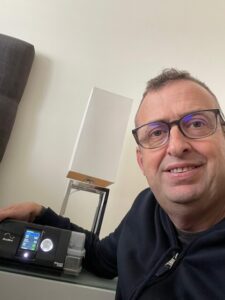
Living with sleep apnea requires some adjustments, but with the right treatment plan and support, it’s possible to manage the condition and live a healthy life. If you have questions, reach out in the comments below.
- Building a Support System: Whether it’s family, friends, or my little blog, having people who understand what you’re going through can make a big difference.
- Creating a Sleep-Friendly Environment: To encourage better sleep, make your bedroom comfortable, quiet, dark, and cool.
- Staying Consistent with Treatment: Consistency is key to managing sleep apnea, whether it’s using a CPAP machine or maintaining lifestyle changes.
Personal Experience: Having severe sleep apnea has been a challenge, but with the right approach, it’s manageable. The combination of CPAP therapy, weight management, and lifestyle adjustments has improved my quality of life significantly.
Here are some pro tips. If you wake up at night, getting back to sleep with a CPAP mask on can often be challenging.
Therefore, I recommend getting shutters for your bedroom or blackout drapes to keep your room as dark and cool as possible.

Avoid caffeine after midday and alcohol a few hours before bedtime, and limit the quantity of liquid you drink before bedtime.
Keep your bedroom around 70 degrees Fahrenheit (20 Celsius). Your body needs to be cooler than your usual body temperature at night to maintain a state of sleep.
All of these measures will limit your chances of waking up in the middle of the night.
Conclusion: Take Control of Your Sleep
If you suspect you have sleep apnea, don’t wait to seek help.
Sleep apnea is a serious condition, but with proper diagnosis and treatment, you can take control of your sleep and improve your overall health.
If I can do it, so can you.
Any comments? Please leave them below.
Disclaimer: The content on this blog is for informational and educational purposes only and is not a substitute for professional medical advice. Always speak with your doctor or sleep specialist before starting, stopping, or changing any treatment or therapy related to sleep apnea or CPAP use.
Disclaimer: The content on this blog is for informational and educational purposes only and is not a substitute for professional medical advice. Always speak with your doctor or sleep specialist before starting, stopping, or changing any treatment or therapy related to sleep apnea or CPAP use.

